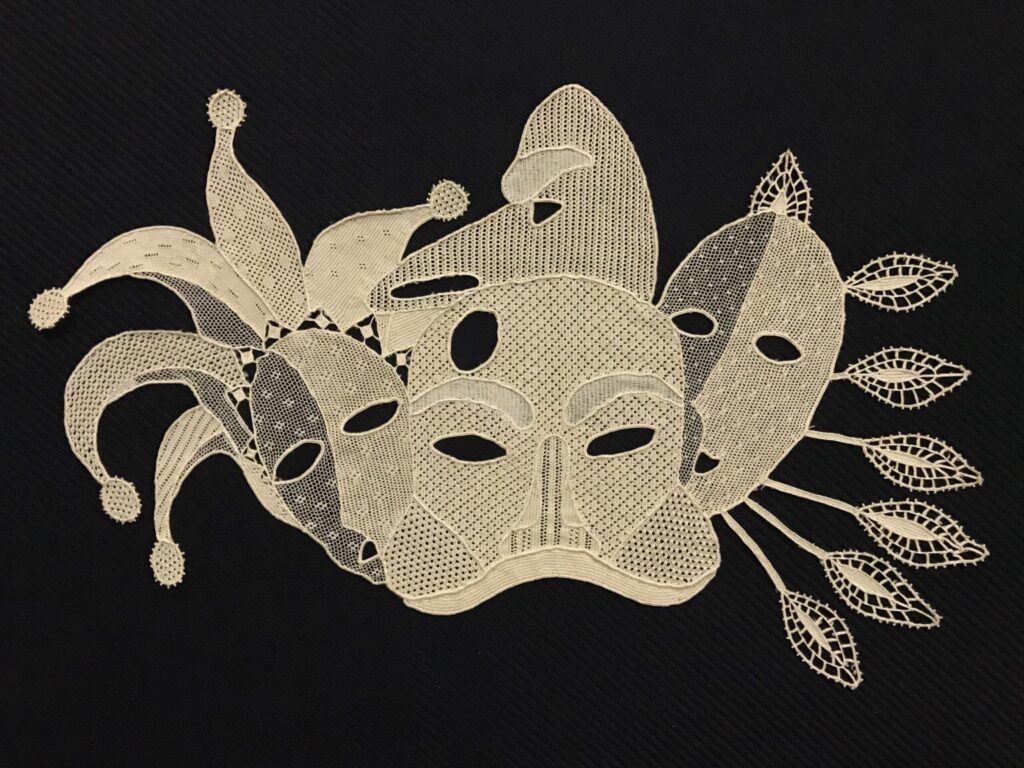Rauma Museum brings lace from Venice to its international summer exhibition
News

Venetian lace will take over the upstairs of the Rauma Art Museum when Rauma Museum brings the international lace exhibition “Patterns from the Sea – Venetian Lace and Contemporary Art” as part of the Pinnala´s summer. The exhibition features Venetian lace from centuries ago to the present day.
Venetian lace patterns are inspired by the sea, and the exhibition explores this connection in dialogue with art. The exhibition features two Finnish contemporary artists, visual artist Anna Niskanen and media artist Niko Tiainen.
The joint exhibition of the Rauma Museum and Rauma Art Museum will open upstairs on 29 June 2024. The exhibition is the main exhibition of the Rauma Museum summer and is part of the museum’s triennial series of international lace exhibitions.
Ancient Lace from Venice
Rauma Museum has a long tradition of international lace exhibitions. Since the 1970s, exhibitions have presented handmade lace from all over Europe.
“But never before have such old lace been on display. The oldest of the lace on loan to the exhibition dates back to the 16th century,” says Hanna-Leena Salminen, chief curator.
The exhibition includes Venetian needle lace on loan from the collections of the Museo di Palazzo Mocenigo, part of the Fondazione Musei Civici di Venezia, the Venice Museum Foundation. The exhibition has been in preparation since 2017. The initiative to bring Venetian lace to Rauma came from Dottoressa Chiara Squarcina, who at the time was the director of the Burano Lace Museum. Dottoressa Squarcina, who has worked for the Venice City Museum Foundation since 1996, is currently Scientific Director in the organisation’s administration. Dottoressa Squarcina will be present at the press conference.
The exhibits in the exhibition give a good idea of the evolution of Venetian lace techniques and the different styles.
“Venetian lace is made using the needle lace technique, which, together with the bobbinlace, are considered authentic lace. Many lace production centres sprang up in Europe, one of the most famous being the island of Burano. Styles and fashions spread to different countries and the same type of patterns were created by needle lace in Venice and by the lace centres of Central Europe,” explains Hanna-Leena Salminen, chief curator.
The traditional Rauma lace also has a hint of Venetian lace patterns.
“Initially lace was a handicraft of the nobility and upper-class women, but it developed into a major craft industry over the centuries. As in Rauma, lace-making is a living craft tradition in Venice today and the exhibition also features modern Venetian lace,” continues Hanna-Leena Salminen.
The rise of cheap, machine-made lace on the market in the 19th century crippled the market for hand-made lace in Venice too. In the 1870s, with the help of a local patron, the lace-making tradition was revived with determination and a lace-making school was established in Burano, which operated for almost 100 years. At the end of the 19th century, there were still a few elderly members of the local lace-making tradition whose skills could be passed on to the next generation through the school. The current lace museum is housed in the former school premises.
Visual art creates lace around the sea – and a sensual Venice
The patterns, the language of lace is inspired by the many forms of the sea and marine life. It seemed natural to include works by artists inspired by the sea. The chiel curator of Rauma Art Museum Heta Kaisto, has curated the art for this exhibition.
“In Venice, the presence of water dominates all the senses. The lace is also sensual, a narrative of touch and image. We wanted to bring Venice into the exhibition through the senses and create a dialogue between lace and art in the exhibition,” says Heta Kaisto, Museum Curator, about the exhibition.
The sea has been a great source of inspiration for lace weavers and artists alike. Rippling waves, gales and the calm sea bring people together in different times and places. Visual artist Anna Niskanen works on monumental cyanotype series. She depicts the sea mainly working abroad.
“Water is all around us and inside us – our bodies are supported by water. In the movement of the water, in the flicker and ripple, we remember where we come from. The materiality of the large unique works and the surfaces of the prints remind us of the physicality of their making and the time it took to create them,” says Anna Niskanen about her series.
Niskanen’s Prussian blue marine subjects are juxtaposed with a more abstract light sculpture. Media artist Niko Tiainen has become known to the people of Rauma in recent years for his impressive event and site-specific media installations. In his commissioned work for the exhibition, Tiainen uses the weather conditions in Venice to guide the work on display. The work will be premiered at the exhibition.